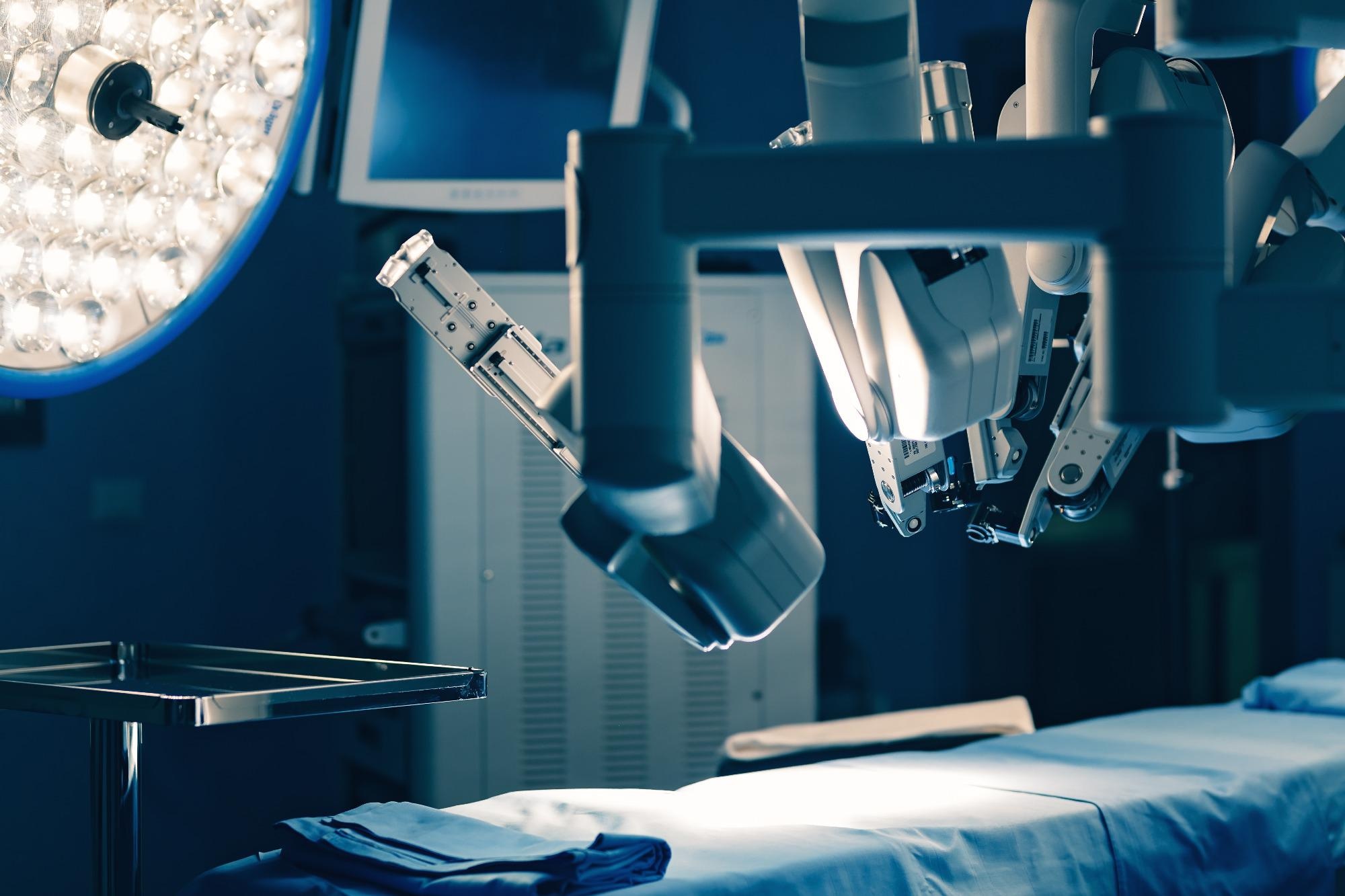
Image Credit: Shutterstock.com/ MAD.vertise
The new KangDuo Surgical Robot-01 system provides great accuracy and surgical success with minimal complication rates and a high degree of surgeon comfort—and might be a less expensive alternative to existing surgical robots. Cheng Shen, Xuesong Li, and Liquin Zhou of Peking University First Hospital’s Department of Urology, Peking University’s Institute of Urology, and Beijing’s National Urological Cancer Center conducted the research.
The researchers looked at their experience doing robot-assisted radical prostatectomy (RARP) in 16 individuals with localized prostate cancer using the KangDuo system. For more than two decades, robotically assisted prostate cancer surgery utilizing the pioneering da Vinci system has been accessible, with proven benefits over conventional open or laparoscopic surgery.
“However, the costs of robotic surgery remain a concern and limit its use,” the researchers add. The KangDuo system, which was developed in China, has shown promise in a variety of procedures.
The patients, who were on average 66 years old, had prostate cancer that had not progressed beyond the gland. Prof. Shen, who has vast expertise with prostatectomy utilizing the da Vinci surgical robot, conducted all of the surgeries. The surgeon’s median time spent behind the KangDuo robotic system console reduced from 102 minutes for the first four cases to 75 minutes for the final four as Prof. Shen acquired expertise.
The researcher stated, “These initial results showed that the [KangDuo] system is feasible, safe, and effective for management of localized prostate cancer.” All procedures were done successfully, with no major complications necessitating conversion to regular open surgery. Surgical margins were “clear” in 75% of patients, indicating that the cancer was entirely eradicated during surgery.
There were no major problems or blood transfusions required. Urinary incontinence is a possible side effect of prostate cancer treatment. At one month following catheter removal, the continence rate in the new trial was 87.5% (14 of 16 participants).
The KangDuo robotic system has numerous key elements that improve hand-eye coordination and allow for a natural and adaptable neck position. The surgeon reported a “high level of comfort” while using the robotic surgeon, including “acceptable” levels of mental and physical demand, according to an ergonomic examination.
The initial experience suggested a few technical issues—The KangDuo system, for example, adds a foot-operated clutch, which needed additional training time for surgeons who were used to the manual clutch of the da Vinci robotic system. There are plans for more improvements, such as a tactile feedback system and the ability to execute long-distance operations utilizing 5G technology.
The researchers highlight the need of continuing to develop new robotic surgical systems. “The da Vinci robotic system has dominated the robotic surgery market for a relatively long period, while the development of technology calls for diversification with more innovation,” the researcher notes. The cost of research, development, and production is estimated to be between 25% and 30% of the cost of the da Vinci system.
The KangDuo system is likely to be approved soon, first in the Chinese market and then globally. “Although the price has not yet been determined, the emergence of new robotic surgery systems lowers the cost of robotic surgery, which could benefit more patients,” Prof. Shen and coauthors add.
Researchers stress the need for more research, including a longer follow-up period and a comparison to RARP, conducted using the da Vinci system.
Journal Reference:
Fan, S., et al. (2022) Robot-Assisted Radical Prostatectomy Using the KangDuo Surgical Robot-01 System: A Prospective, Single-Center, Single-Arm Clinical Study. The Journal of Urology®.